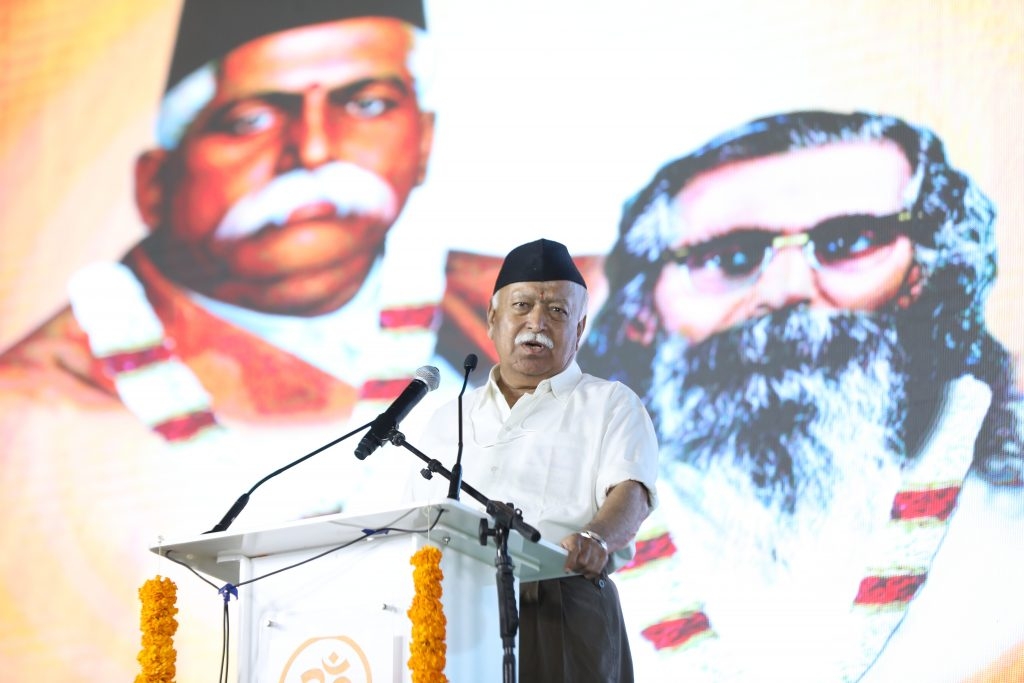Bangalore: In a recent statement issued by the Rasthriya Swayamsevak Sangh (RSS), its chief Mohan Bhagwat said: “Nowadays the number of divorce cases have increased a lot. People fight over trifle issues. The cases of divorce are more in educated and affluent families because with education and affluence comes arrogance, as a result of which families fall apart. The society (sic) also falls apart because society is also a family”.
While many have criticised his statements as being regressive and problematic, we focus on whether he is correct. Our analysis using the National Family and Health Survey-4 (NFHS-4) indicates that he is not.
The opposite is true—women with lower levels of education and wealth are divorced and separated at higher rates than those more educated. This may be due to a number of reasons including multiple stressors on the marriage—financial crisis, poor health and higher rates of domestic violence.
Data and Analysis
We use data from the NFHS-4, a government commissioned, nationally representative, large, demographic and health survey that occurs every 5-7 years and has been in existence since 1992-93. The latest round, NFHS-4, concluded in 2016. The survey was administered to 6,01,509 households all over India. Altogether 6,99,686 women aged 15-49 and 1,12,122 men between 15-54 years were surveyed.
Figure 1 shows the percentage of women who are divorced or separated within each of 5 wealth quintile categories. There is no clear, substantial pattern in divorce rates across the five groups; if anything, the richest have slightly lower divorce rates. For separation rates, Figure 1 shows that it is lower for the last 2 quintiles (richer and richest) compared with the first 3 quintiles.
Figure 1: Divorce and Separation Among Women, by Wealth

Figure 2 uses a simpler measure of economic status: whether or not a woman is from a household that owns a TV. The overall pattern matches the pattern from Figure 1. Divorce rates among women are similar across the two groups. And the separation rate is lower among women from TV-owning households compared to non-TV-owning households.
Figure 2: Divorce and Separation Among Women, by TV Ownership

Figure 3 shows women’s divorce and separation rates by extent of formal education. Those with some secondary education have lower divorce and separation rates than those without some secondary education. In the case of separation, clearly the lowest rate is among those with the most formal education (namely, at least some education beyond secondary school).
Figure 3: Divorce and Separation Among Women, by Extent of Formal Education

Figure 4 shows that divorce and separation rates are more in urban areas than in rural areas. However, arguably the difference is relatively small: the combined divorce and separation rate in urban areas is less than a fifth more than for rural areas.
Figure 4: Divorce and Separation Among Women, Rural vs Urban

The data presented so far suggest that it is incorrect to say that divorce or separation is more among educated or affluent women. And while these rates are higher in urban areas, the urban-rural difference is not as stark as the stereotype would suggest.
Domestic Violence And Divorce
The reality is that a large number of women face domestic violence — physical, emotional, sexual or economic abuse—and this may lead to stressors that dissolve marriages. Statistics from the National Crime Records Bureau (NCRB) indicate that Indian housewives have the second-highest rates of suicides in the country, with the majority killing themselves due to dowry related harassment.
We explore the links between domestic violence and divorce using data for a representative sample of 66,013 women selected for the Domestic Violence (DV) module in NFHS-4. There are nine questions on physical and sexual violence ranging in severity from a slap to being burned or attacked with a knife and being forced to have sex.
For emotional violence, NFHS-4 asks questions on being humiliated, insulted or threatened. The survey defines domestic violence as violence by a spouse or any other marital family member; in NFHS-4, 31% of women report physical, sexual or emotional violence. However, we know that in India violence in marriage and especially sexual violence tends to be largely under-reported: 3.3% of women report sexual violence during pregnancy.
Figure 5 shows that divorce and separation rates are far greater for women who underwent domestic violence compared to other married women. We see especially stark differences for women who report severe violence --this includes punching with fists or with something that could hurt; kicking; dragging or beating; choking or deliberate burning; and threatening to attack with a knife, gun or any other weapon.
Figure 5: Divorce and Separation Among Women Subjected to Domestic Violence

There exists fragmented evidence on the rates of divorce in India, which is suggestive of an increasing trend, but cannot be relied upon to solidly establish that divorces have increased in the country. India’s divorce rates are not especially high or low when compared to other countries and present immense regional variation, just as domestic violence rates do.
International studies (here and here) have shown a link between high rates of violence and divorce or separation. Women who are abused in intimate relationships in many developed countries leave, though it may take them much longer to do so in India, given the lack of social and familial support and financial independence for poor women.
While women across all social classes may be subjected to domestic violence, due to structural and institutional factors, poor women may be at a higher risk of domestic violence, which may explain why we see higher rates of divorce or separation among women who are economically disadvantaged.
(Suraj Jacob is a political economist based in Trivandrum. Sreeparna Chattopadhyay is a cultural anthropologist with research interests in gender, health, family and violence.)

